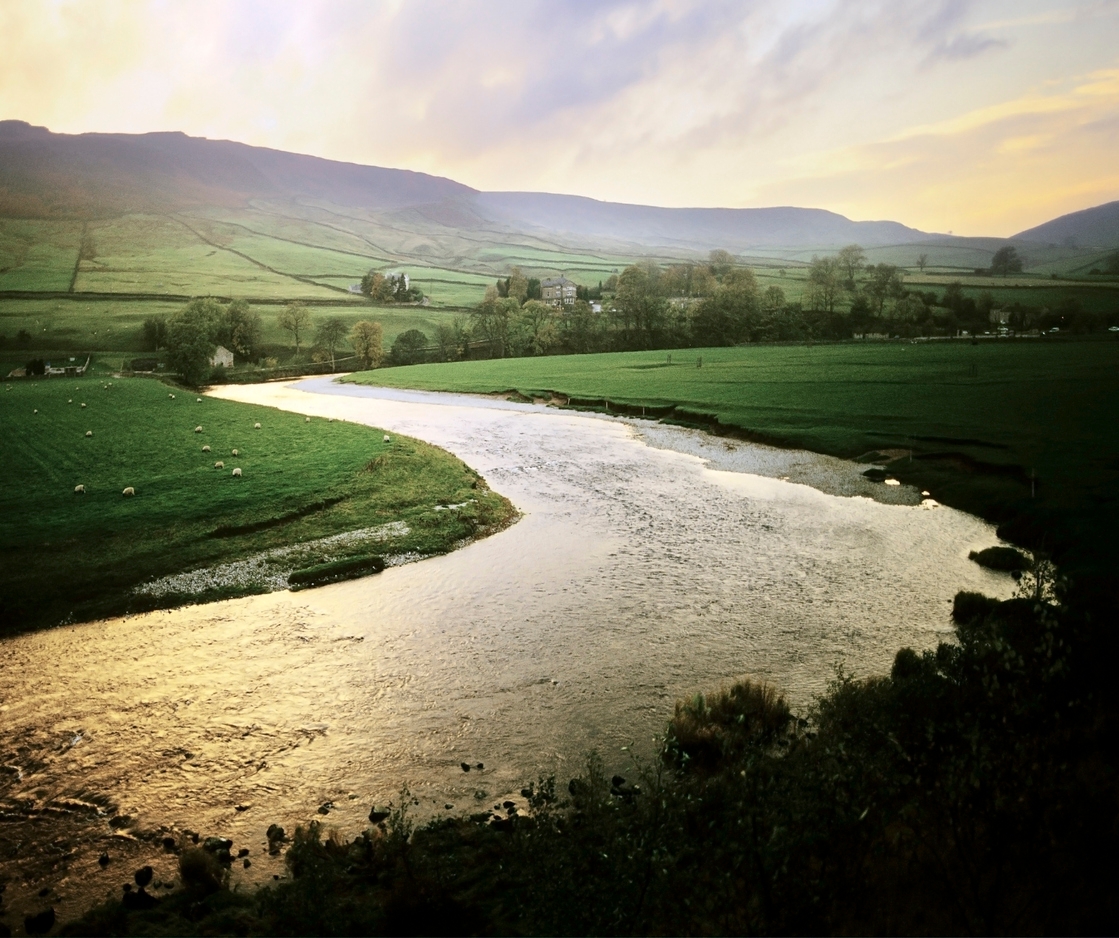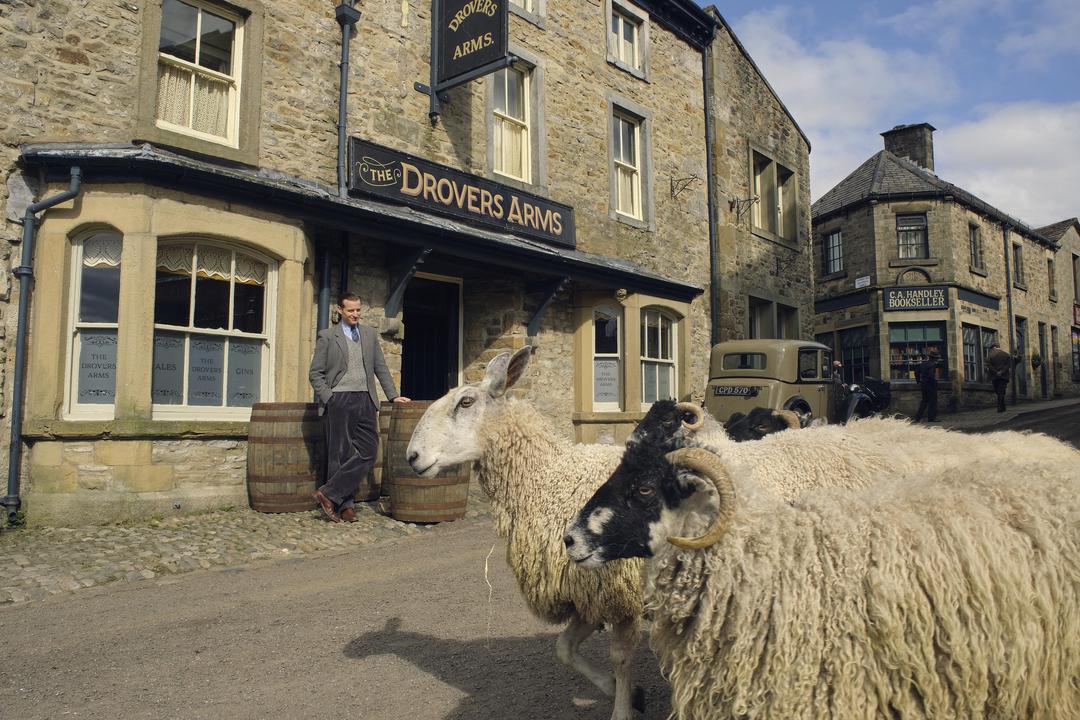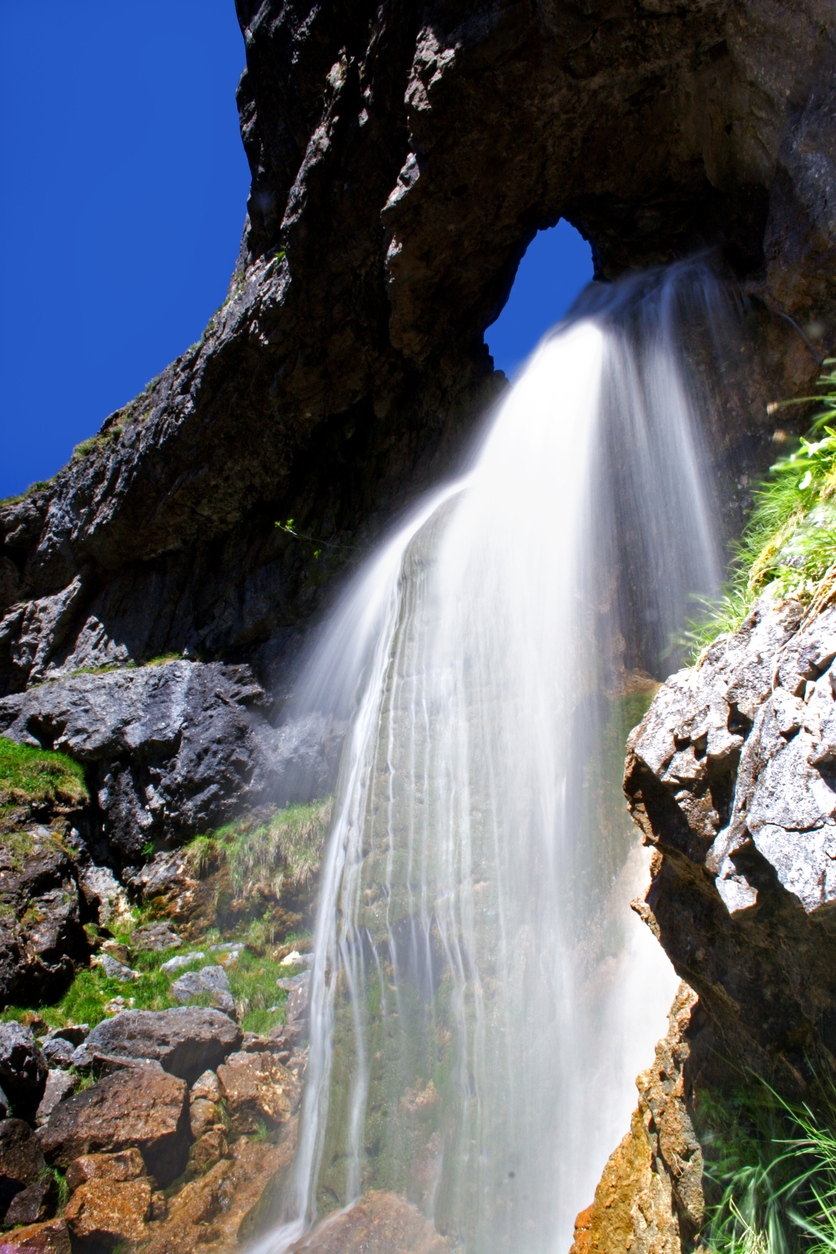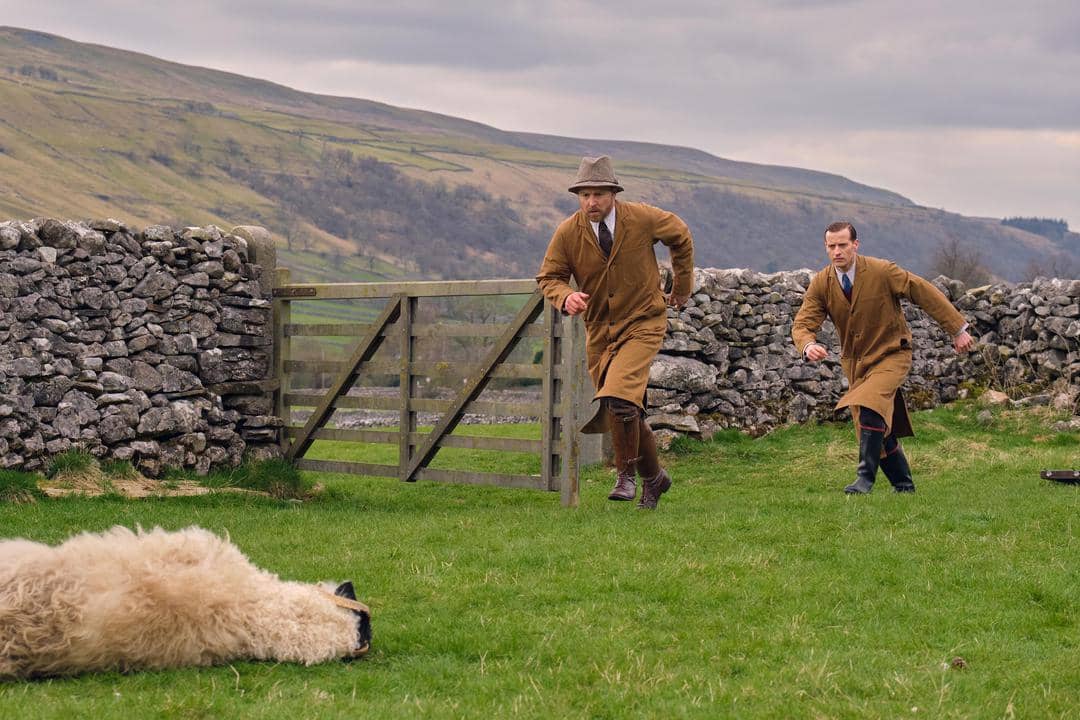James Herriot’s story about a country vet, with scene-stealing backdrops and a coterie of country characters first instilled the Yorkshire Dales into the popular imagination back in 1972. The beauty of Yorkshire wasn’t lost on Herriot, whose real name was Alf Wright: ‘At times it seemed unfair that I should be paid for my work,’ he writes in All Creatures Great and Small, ‘for driving out in the early morning with the fields glittering under the first pale sunshine and the wisps of mist still hanging on the high tops.’

And it seems millions of others are now discovering the joys of this landscape too. The revised TV adaptation of this book, about the trials and tribulations of a country veterinary practice in the middle of the 20th century (first televised in the 1970s and currently showing on Channel 5) has coincided with a marked increase in visitor numbers, including the number of young people discovering the Dales.
The new series was largely filmed in and around Wharfedale in the southern Yorkshire Dales, with Grassington as the fictional Darrowby. In reality, Herriot was based in Thirsk which is not technically in the Dales (it’s on the edge of the North York Moors) where his original veterinary practice (which he re-imagined as Skeldale House in his books) is now The World of James Herriot Museum.

But Grassington, with its narrow lanes, cobbled village square, period houses and individual shops, easily transforms into 1930s England. Local pub The Devonshire, for example, provided exterior shots for the fictional Drovers Arms, independent bookshop The Stripey Badger became greengrocer’s GF Endleby, Walkers Bakery became Darrowby Cycle Stores, and one of the village’s larger private homes became Skeldale House, home to veterinary surgeon Siegfried Farnon (Samuel West) who hires the newly qualified James Herriot (Nicholas Ralph) as his assistant.
The charming Grassington Folk Museum, with its collection of vintage farming equipment, domestic paraphernalia and alarming medical equipment for home operations, could seem entirely at ease in the TV series.
Wharfedale (and its tributary valleys such as Littondale) arguably, is the most attractive of the Yorkshire Dales, not just for its classic Dales scenery of dry-stone-wall latticed fields, limestone escarpments and soft greenness, but also for its variety, from scenic walking and timeless villages to grand gardens. (As I was born and brought up in Ilkley, in lower Wharfedale, I may be a little biased.)
Bolton Abbey, downstream from Grassington and part of the Devonshire (as in Chatsworth) estates, is a real family pleaser. Explore the ruined 12th-century Augustinian priory, wobble across the river’s stepping stones, find a picnic spot, or stroll through Strid Wood (gorgeously blazing in autumn) to the wood’s eponymous narrow gorge where the river squeezes between the rocks with a fascinating fury. Strid Wood Tea Rooms, beyond the gorge, is worth the extra mile walk for its home-made cakes.
There’s no shortage of walking opportunities in the valley. For a start, the 80-mile-long Dales Way follows the River Wharfe on its way between Ilkley in the east (downstream of Grassington) to Bowness-on-Windermere in the Lake District. It was on a stretch of this walk, between Burnsall and Grassington, that I had my first and, so far, only, real-life sighting of a kingfisher.
Burnsall, with its riverside Red Lion pub and village ice cream shop, is a good starting point for several walks including a circuit that takes in Trollers Gill, a narrow limestone ravine, both atmospheric and rocky, and best not attempted after heavy rainfall when the normally underground stream bursts overground. After passing Parcevall Hall Gardens – a respected and renowned plantsman’s garden, both formal and woodland – and skirting Appletreewick, the return route forces you to pass The Brownie Barn. Leave plenty of time to savour these heavenly baked-in-house brownies.
More spectacular, though busier, than Trollers Gill is Gordale Scar, a vast limestone gorge and waterfall in Malhamdale, to the west of Grassington, formed due to the collapse of an underground cavern created by Ice Age meltwater. A walk to the Scar from Malham village passes Janet’s Foss, a photogenic waterfall plunging into a tree-shaded pool where James Herriot was shown taking a swim.

A steep climb up the side of Gordale Scar’s waterfall brings you to Malham Lings which is where Herriot, when he first arrives in Yorkshire from his native Glasgow, accidentally gets off the bus and is forced to walk the several miles of lonely moorland to Darrowby (Grassington).
If you’re feeling gung-ho, a circular walk takes you northwards from here to Malham Tarn and then west and south over a vast limestone pavement to the top of Malham Cove, a spectacular curving 260-foot wall of limestone – which once carried a massive waterfall – with a steepish, stepped path down one side. Or you can reach the Cove on a walk direct from Malham village. After all that you’re probably ready for a drink; try The Lister Arms in Malham village, opposite the green, with local cask ales and famed for its home-made pies.
Malham and its star geological attractions do get busy. To escape the crowds, head further up Wharfedale, past the dare-devil rock-climbers who breezily hang off (literally) the overhanging challenge of Kilnsey Crag and take the turning to Arncliffe up quiet Littondale. With its long village green, well-maintained 17th– and 18th-century stone houses, occasional free-roaming hen and quietly traditional pub, The Falcon, the village has a gentle, timeless feel. Indeed, part of the Darrowby Show in ‘All Creatures Great and Small’ was filmed on the village green. Stroll alongside the peaceful River Skirfare or, for more of a challenge, take a circular walk up over Knipe Scar and down to Kettlewell in Wharfedale – with a stop for home-made cake at the And Then Deli – before the walk back over Old Cote Moor. The sweeping views from the tops, both outward and return, are glorious.
Further up Wharfedale, the crowds lessen and the names become more evocative: Starbotton, Hubberholme, Yockenthwaite. Hubberholme, more hamlet than village, has a welcoming pub, The George Inn, originally the vicarage for St Michael and All Angels church, picturesquely sited opposite across the river. Dating from the 12th century, its graveyard contains the ashes of that stalwart Yorkshire writer JB Priestley who was fond of both the church and the pub.
At this point, Upper Wharfedale tips into Langstrothdale and then the road winds up and over into Wensleydale, which is a whole other story.
Where to stay and eat
The Angel Inn, Hetton angelhetton.co.uk
Michelin-starred restaurant in a 15th-century inn with rustic-chic and cottagey bedrooms.
Grassington House, Grassington grassingtonhouse.co.uk
Smart restaurant-with-rooms in a Georgian house, overlooking the square, with designer bedrooms.
The Lister Arms, Malham listerarms.co.uk
Family-friendly pub with hearty home-cooked food and simple contemporary bedrooms.
The Devonshire Arms, Bolton Abbey devonshirehotels.co.uk/devonshire-arms-hotel-spa
17th-century inn turned smart country house hotel with spa, and brasserie and fine-dining restaurants.






Comments